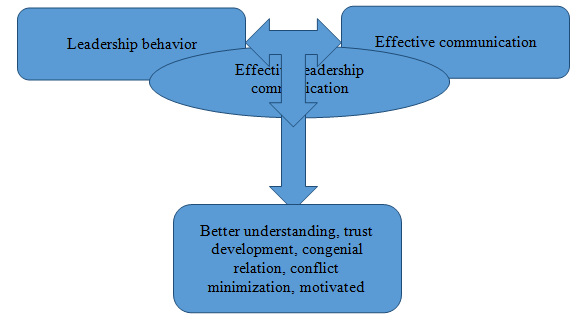Strategic Management Assignment Help
a) Critically assess the key principles and theories underlying strategic people management and explain how their application enhances organisational and individual performance.
b) Demonstrate effective communication and practical problem-solving skills to effectively manage people in a range of organisational contexts.
c) Critically reflect on the roles and functions that managers perform in the context of the challenges and risks they have to address in the changing environment.
d) Develop and justify a model of management cognisant of the organisational minutiae to guide future practice.
Expertsminds.com accepts instant and short deadlines order for Strategic Management Assignment Help – order today for excellence!
Introduction
Strategic management for employee is referred to as the connection between an "organization's objective" and "human resources". The primary objective of such management is to achieve flexibility and competitive advantage along with intention to bring innovation (Omotayo, 2015). Effective team management leads to the improvement of employee performance as well as organizational productivity (Bolden, 2016). Additionally, team management also promotes creativity, where each member gets the opportunity to reveal their best quality to maximum. In the present report, the importance of the organizational management team in various fields such as motivation, influence, politics, communication, conflict, and negotiation has been outlined.
Organizational nature and role of management
The nature of organizations is basically of four types; natural, rational, open, and closed systems. The management of any organization is involved in various functions such as planning, organizing, directing, staffing, motivating and monitoring (Aladwan, Bhanugopan, & D'Netto, 2015). However, the management team has to face some of the common organizational challenges like communication, conflict resolution, performance management, and employee turnover. Thus, it is required by the management team to apply the philosophy of the strategic management of people. In this context, the organization should keep their employees trained, provide clear communication, and become committed (Bolden, 2016). I have previously worked as a manager in XYZ organization which is based on a rational system where the goal is predefined. Based on my past experiences and the above discussion, I concluded that clear communication is highly essential to avoid misunderstandings among employees.
Importance of motivation, influence, power, and politics
Workplace power is referred to as the possession of authority as well as influence over other co-workers. Politics is the inappropriate use of social networking within the organization to achieve advantage, appreciation, and attention from others. It is the responsibility of the leader or manager to handle the power and politics in a positive direction. Moreover, the manager is also responsible to motivate the fellow employees to deliver better performance. Effective motivation is dependent on four elements of leadership behaviour, undirected, participating, supportive and achievement-oriented (Omotayo, 2015). Similarly, influence is the act of diverting individuals or groups towards the desired mind-set or behaviour. Managers need to become control themselves from being influenced while influencing others. For influencing others to achieve organizational goals, it is required to consider five dichotomous elements, direct, overt, conscious, active, and individual (Bolden, 2016). Thus, it is essential to become an efficient leader who is self-directed and determined in behaviour. On the basis of past experience, I find that employees can be easily influenced by flexibility, assertiveness, trust, consistency, action-oriented, and listening to others.
Role of a manager in communication, conflict, and negotiation
Conflict management, communication, and negotiation are unavoidable and important aspects to gain a competitive advantage. Communication plays a major role in conflict management and avoids misunderstandings. Managers should show strong leadership to manage conflict among geographically diverse, cultural difference and competitive employees. Negotiation is another most widely used tool for conflict management through significant communication competencies of the manager. Through tactful negotiation skills, it is able to incorporate settlement in agreements, coordination across the boundaries, and collaborations with clients (Gilin Oore, Leiter, & LeBlanc, 2015). An effective and successful negotiation include teamwork and detailed homework. Proper interaction with team members provide support to their position and also critique others. This is necessary for the managers to implement effective communication skills within the workplace. Giving truthful feedback either positive or negative creates a balanced and honest relationship with employees. Moreover, employees should be allowed to steer conversation encouraging two-way communication. Managers need to follow a general rule of criticizing in private and praising in public. Problem-solving is also an important part of conflict management which includes the four basic steps, problem definition, identifying alternatives, choosing the best strategy, and implementing the final solution (McKibben, 2017). I have experienced from my past job that ineffective conflict management creates employee dissatisfaction and in turn, hampers the company's image. Thus, in my future project, I will focus more on problem identification and try to resolve the same with clear communication.

Conclusion
In summary, the present report has illustrated the concepts related to organizational management in termsofconflict management, influencing, motivating, and effective communication. It is learned that clear and effective communication at internal as well as the external level is essential to avoid future conflict and increases coordination in teamwork. Thus, the manager should represent strong leadership to motivate, direct and negotiate issues among fellow employees. It is believed that the information provide in the report can be used in other organizations for strategic employee management.
Getting Stuck with Similar Strategic Management Assignment Help? Enrol with Expertsminds’s assignment help services and Get distressed with your assignment worries!